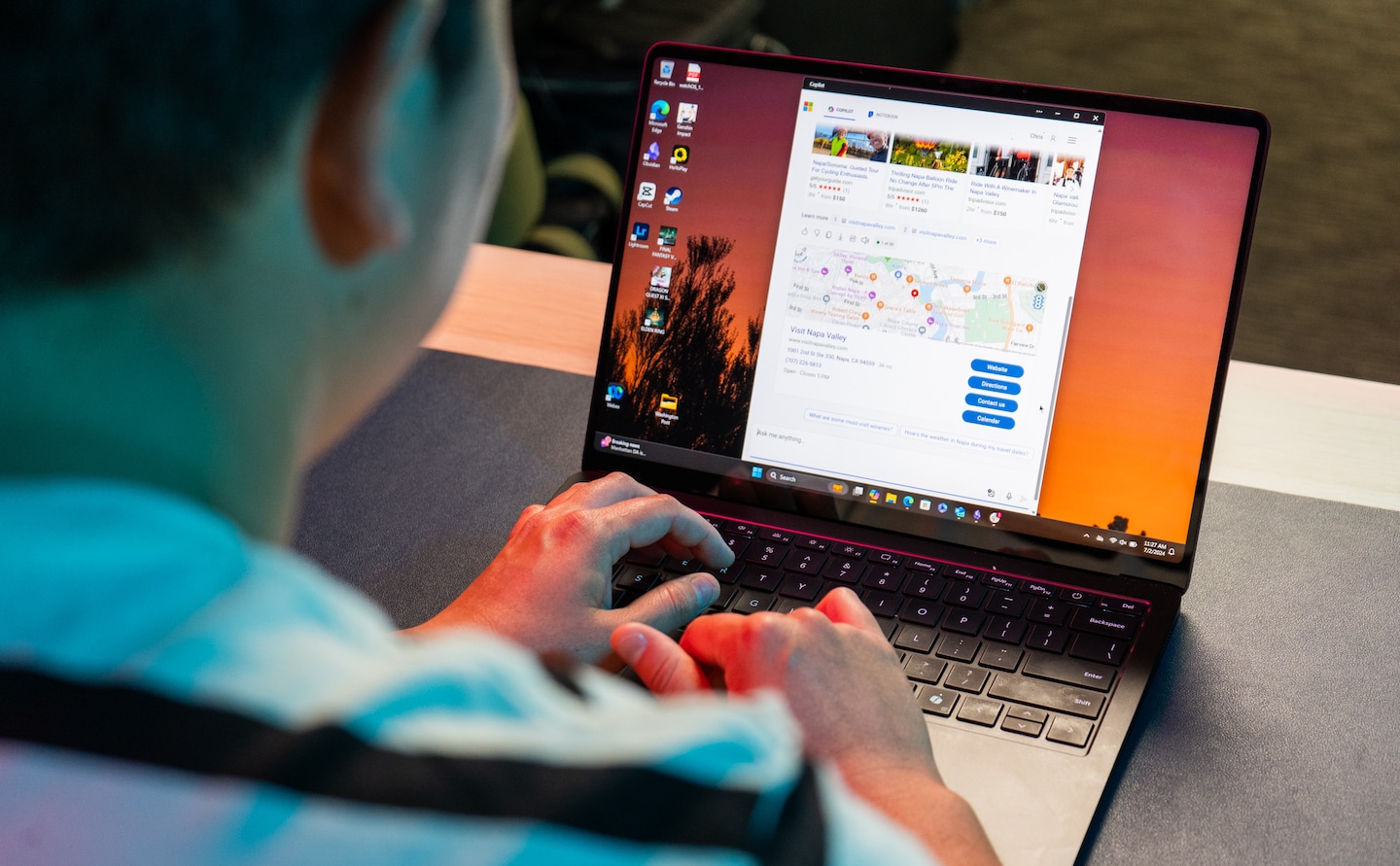
We tested new AI laptops, and their best features aren’t the AI
- Science
- July 4, 2024
- No Comment
- 138
With prices starting at $999, some of these new types of PCs can seem like tantalizing deals, whether for you or someone heading off to school this fall. But after testing Microsoft’s Surface Laptop and Lenovo’s Yoga Slim 7x, one thing seems clear: The reasons an AI PC might suit you well may not have anything to do with AI.
Here’s what you should know about them before you jump in.
What is an AI PC, exactly?
Basically, it’s tech industry slang for a computer with a processor that has a specialized part called an NPU, or neural processing unit, that’s tuned to run artificial intelligence features directly on your PC.
Think of it this way: Imagine you’re back in school and you desperately need help with calculus. You could try to power through it, but the smart move is tapping a math-fiend pal to help you crunch numbers. In this case, that buddy is the NPU, except instead of helping with differentials, it’s doing the calculations that help generate wacky images on the fly.
While they don’t look it, Microsoft’s current batch of Copilot+ PCs are pretty distinct from the Windows computers you’ve used. That’s thanks to an interesting chip choice: These PCs use processors from Qualcomm rather than Intel or AMD, which means they run a bit differently. This is mostly a good thing, but there are some downsides — more on those later.
What can this AI do for me?
Here’s what you have to look forward to, ranked from my most used to the least.
Studio Effects for your webcam. Some Windows 11 PCs already have these, which you can use to blur your background while on video calls. Microsoft tweaked the feature for Copilot+ PCs to include a tool for making your eyes look like you’re staring straight ahead, even while you’re glancing off to the side to read your notes aloud.
Creepy? Possibly, but I don’t think anyone on the other end of my Zoom calls has caught on yet.
A chatbot companion. Microsoft’s Copilot chatbot is already part of Windows 11, but now you can press a dedicated button on your keyboard to start talking to it. The catch? It’s really not that different from just talking to it on a website. And in some ways, Copilot is actually less capable here than before.
On Windows 11 PCs that don’t have these fancy new chips in them, you can ask Copilot to interact with some of your computer’s settings — say, for switching to dark mode or setting timers. That’s totally gone from Copilot+ PCs, which is a bummer for anyone hoping their parents could ask an AI to tweak their computer instead of calling over and over.
Live captions and translations. Like Studio Effects, some Windows 11 PCs could already generative live captions of whatever audio is playing. Now, the feature will translate audio in 44 languages to English on the fly — or at least that’s the idea. At their best, the translations are a bit stilted, and the captions pop up just late enough to make following along tricky. And at worst, well, they don’t make sense.
AI art assistance. If your MS Paint skills were as lacking as mine, you can now use the Paint app’s co-creator tool to help — just describe what you want to see, and use the usual brushes and colors to guide the AI along. It’s genuinely neat, and something I’d love to see a child get familiar with it, but far from essential.
You can also just turn things over to AI entirely with an Image Creator feature — except you have to be connected to the internet and have a Microsoft account to do it. You may as well ask ChatGPT to do it for you in the first place.
Recall. This tool, which takes screenshots of everything you do on your PC so AI can help jog your memory, was supposed to be the flagship feature of these Copilot+ computers.
Oops. It’s not here yet. An uproar from security researchers who found that the feature was both turned on by default and stored potentially sensitive data insecurely forced Microsoft to pump the brakes.
Are these AI PCs actually worth it?
They can be, even if the AI stuff is a disappointment.
Because of the chips you’ll find in these Copilot+ PCs, you can expect to see some really nice battery life. Take the Surface Laptop ($999+) I’ve been testing: After putting it through a full day’s worth of writing, taking video calls, trying out games and editing photos, it often had between 20 and 30 percent charge left before I shut its lid for the night.
On days mostly spent in a web browser, meanwhile, I could use the laptop for eight hours straight without even hitting the 50 percent mark.
That’s just fantastic for a Windows laptop, and I can’t overstate how nice it is to just do your thing without feeling battery dread. And that’s especially true considering my test machine — a higher-end Surface Laptop model — felt snappy and responsive through nearly everything I threw at it.
I say “nearly” because some things I tried simply didn’t work.
Blame an interesting chip quirk. All of the apps you’ve ever used on a Windows computer were designed for one underlying foundation, or “architecture,” but Qualcomm’s chips use a different one. And that means apps you want to use sometimes won’t run.
In my case, that’s mostly been games: They see a processor they don’t expect and refuse to start. Thankfully, these PCs are clever enough to “translate” older apps to run on the new chips’ architecture, but you may run into bugs and extra power drain as a result.
If you mainly live in a web browser, you don’t have much to worry about. But if you rely on any Windows apps or utilities — especially older ones that may not get updated — you’ll want to hold off on a Copilot+ PC until you can make sure that the software works the way it needs to.
Apple went through similar app growing pains when it switched its computers over to Apple Silicon chips in 2020, and it’s doing just fine on the other side. Microsoft and its partners are in a similar position now: Even without great AI tools, these so-called AI PCs are undeniably good at the stuff that matters — and they stand to get better with time.
#tested #laptops #features #arent









